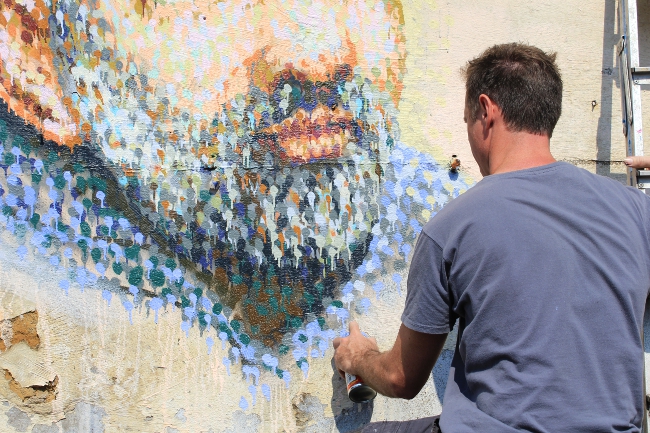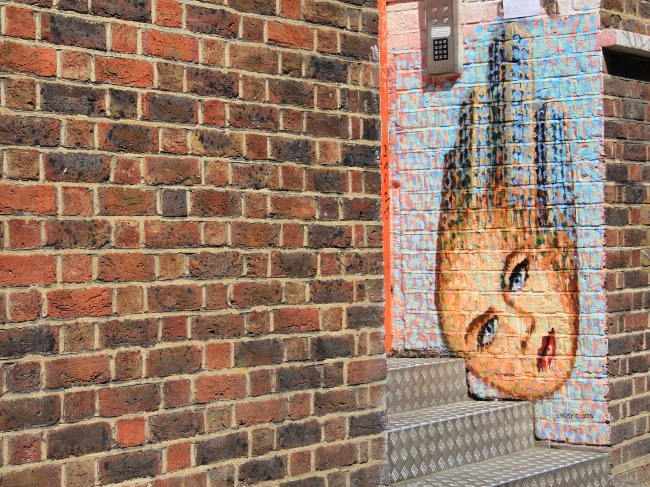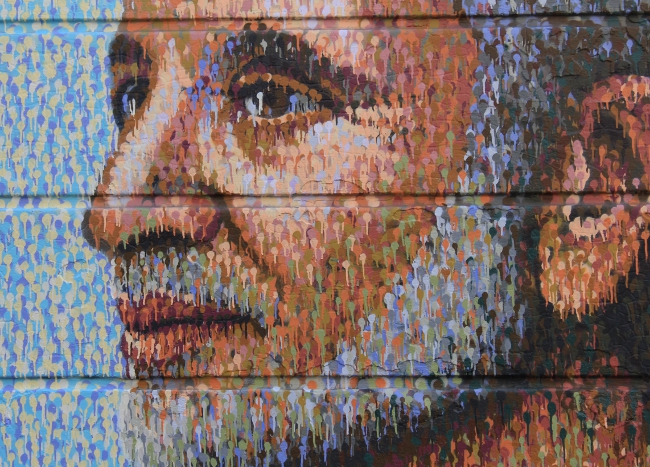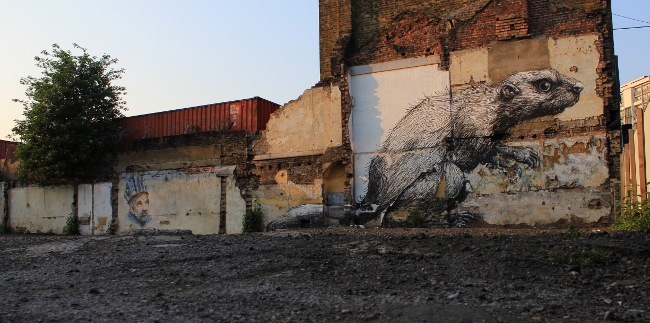
Tell us a little about your artistic background and how you got into street art?
I was always interested in art, but in the late 80’s was taken in by the graffiti subculture which worked well with the adolescent angst and the need to forge an identity at that time. This developed into mural work and then later onto art school where I was introduced to the broader history of painting. After a focus on oil painting and the tradition of figurative painting, I returned to the source – the spray can – which led to a more fluid and personal technique. Throughout this time I have alternated between painting in the street and in the studio.
Where and when did you put up your first street piece?
It was a two tone three letter piece in 1989, on the Belair line in Adelaide!
Your street style is very unique, how did you develop it?
For many years I was involved in community arts projects and coordinating aerosol art workshops and mural projects. In Australia I had the opportunity to work with aboriginal communities in regional areas and to collaborate with other artists. Whilst working on a traditional dot style painting mural with another aboriginal artist, it occurred to me to start experimenting with dots later in studio. This developed into a series of work which I exhibited in 2004 entitled The Aerosol Pointillist series, and from there developed into what I called ‘The Drip Paintings’.

How do you choose which walls to paint on. Do you prefer certain contexts over others?
It can be fun looking for walls, and the context does make difference. For example, if it is a wall closer to your area it may simply be for personal reasons that you want to paint it, related the fact that you walk past it everyday and the inspiration just comes to you. If you are painting however in a new area or even a new city, you have to adapt more quickly and work with what you have available. I try to do my research in order not to paint over anyone, even a tag that could be relevant or respected in that area. In most cases when looking for a wall it is more a matter of feeling.
Tell us a little more about your pieces on Redchurch Street, Bacon Street and Hackney Road. Are the people in these pieces based on people you know or from your imagination?
The Bacon street piece was inspired by a homeless man I met in Paris, but what I was really wanted to do was to create a portrait that could be relevant to the area. The painting has been embraced by the locals because it could be either an Indian or a Turkish man, or a man of any religious or spiritual disposition, simply a man of wisdom and compassion. I like to try to keep things open in my work so people can bring their own meanings to it. The Redchurch street pieces are from my imagination but symbolise the weight of the city upon the individual or how we are influenced by our urban environment. The Hackney road piece follows the same idea, and draws a kind of ironic reference to a saint wearing a city on his head like a halo.

What is it that you like about painting in London?
I am always taken in by the shifting and dynamic energy on the streets of London, in particular the east end. You turn your head for one minute, and a new wall is painted. This element of surprise, energy and expression is really nice.
Having travelled extensively presenting your art in cities around the world, in which places did you have the best and worst experiences and why?
I have fond memories of most of the cities I have painted or exhibited in, and as with most things, there have been challenges and rewards. In whatever city, it is inspiring and an honour to be able to travel with your artwork and to be able to share it with other people.
Why is street art important?
The growth and evolution of street art has been incredible – a free expression available to everyone. I love the way it can’t be held down. It exists outside the institution and outside commercialisation. Of course people try to get their hands on it to profit financially in someway, but the spirit will always remain free. I love the way it can be subversive, social or political, funny, or just random. It is an important vestige of individual liberty and spontaneity in a seemingly more controlled and commercialised world.

What are your plans for 2011?
I have an exhibition that has just opened in Lille in France, and in june I will head to New York to see what is happening on the streets. After that I make a quick visit to Vancouver then will fly back around to Australia. From there I will probably get back to the studio for a while in Adelaide, and wait for the next seed of inspiration to grow.. 😉

This brother has got it going on. Using the spray can as a medium reflects on James style growing up appreciating graffiti art but I love the way he users the paint. He takes the “aggression “out of the spray can which is normaly related to violence and huge colorful letters sprayed along urban brick walls, into a modern brush stroke that sometimes reminds me of masters such as Monet. This I have never seen before with over 25 yrs of experiance being involved in graffiti sub culture. Keep up the good work!!!